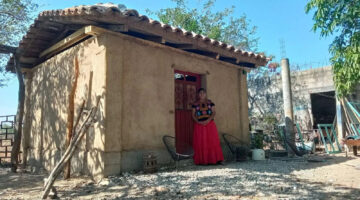Solidarités Nouvelles pour le Logement (SNL) strategies to provide affordable housing (France)
Main objectives of the project
SNL's housing initiatives exhibit a diverse range of strategies, from prioritizing access to properties by transforming them into affordable housing in small towns, to securing long-term housing solutions in urban areas like Paris through partnerships with private investors and legal frameworks, and employing specific lease mechanisms for sustainable refurbishment efforts.
Date
- 1988: Implementation
Stakeholders
- SNL
Location
Country/Region: France
Description
The French government estimates a need for 500,000 new housing units to address housing demands adequately, yet only around 350,000 units are constructed annually. Despite municipalities being obligated to provide social housing, this obligation is not consistently met, resulting in a shortage of affordable homes. Additionally, some properties remain vacant due to owners being dissuaded from renting them out because of taxation concerns.
Solidarités Nouvelles pour le Logement (SNL) addresses these challenges by providing temporary housing to vulnerable households and supporting them until they can secure permanent accommodation. In 2018, SNL housed 2,894 individuals, including 1,285 children, many of whom were previously homeless or living in inadequate conditions. SNL operates through SNL-Prologues, a real estate social enterprise that acquires, renovates, and manages properties for housing vulnerable families. SNL-Prologues, as a social economy cooperative, has opened its capital to social savings funds and private investors and is exempt from certain taxes due to its social mission.
One of SNL's strategies involves collaborating with local authorities to acquire properties rented with low-comfort features, converting them into decent and affordable housing.
For instance, in a small town where affordable housing was scarce, SNL successfully lobbied the local government to grant them the right of first refusal for a property unlawfully rented by slumlords. By persuading the municipality to address the needs of the households affected, SNL gained priority access to acquire the property. This allowed SNL to transform it into decent and highly affordable housing for five families, preventing it from being acquired by another investor. In Paris, SNL utilizes legal frameworks to partner with private investors, securing housing for vulnerable households through innovative financial arrangements and subsidies. Under this arrangement, private investors grant SNL-Prologues the usufruct right, enabling SNL-Prologues to rent the property for a specified period. Through financing of €150,000, sourced from subsidies provided by local authorities and NGOs, SNL is poised to accommodate vulnerable households in six affordable dwellings for a duration of 20 years. Additionally, in Paris, SNL utilized a specific lease mechanism known as "bail à réhabilitation" (renovation lease) to temporarily assume ownership of a 110 m2 apartment in the city center. Through extensive refurbishment efforts, SNL reduced the property's energy consumption by 35% and subdivided it into two smaller apartments suitable for two formerly homeless families. The property owner benefits from tax incentives associated with renting under this status, and upon the lease's expiration in 18 years, they will regain possession of a refurbished property.
SNL's efforts result in significant social impact, with 97% of individuals transitioning to permanent housing after an average stay of three years in SNL-provided accommodation. The average annual cost per dwelling, including acquisition and renovation, is €3,660, with funding sourced from rent payments (32%), public subsidies (50%), and private philanthropy (16%). Notably, the cost of housing a family in a hotel room is significantly higher at €6,240 per year, underscoring the cost-effectiveness of SNL's approach.




